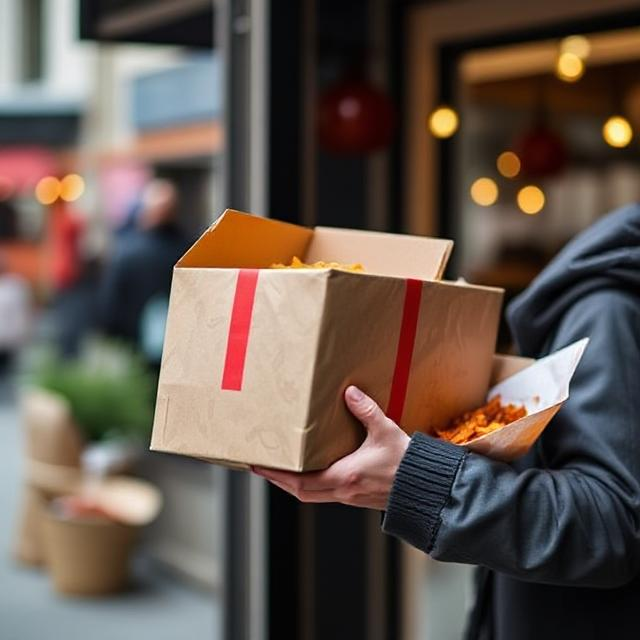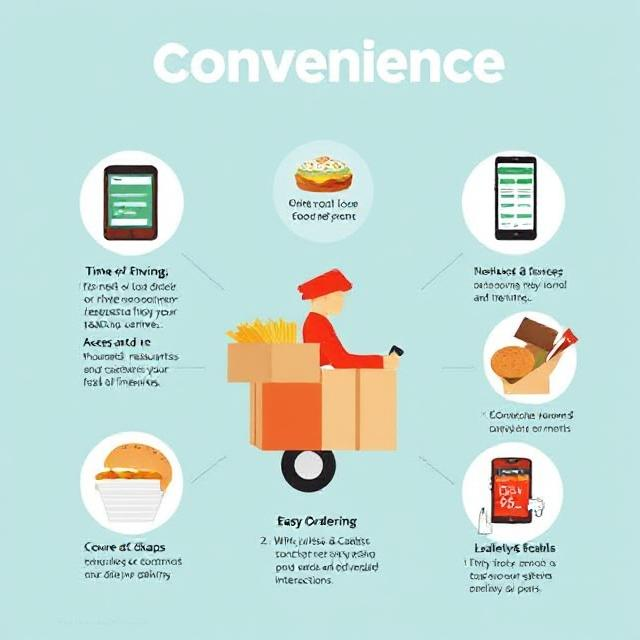The Rise of Online Food Delivery: Convenience vs. Cost
The rise of online food delivery has transformed the way people order and enjoy meals. With the convenience of mobile apps and websites, customers can access a wide range of cuisines from their favorite restaurants with just a few clicks. The demand for fast, reliable, and contactless delivery services has surged, especially after the COVID-19 pandemic. Online food delivery platforms leverage advanced technology, including AI-driven recommendations and real-time tracking, to enhance user experience. As competition grows, businesses continuously innovate to meet customer expectations. This industry’s rapid expansion signifies a shift in dining habits, emphasizing convenience and digital accessibility.

The Rise of Online Food Delivery
Online food delivery has transformed how people order and enjoy meals, making it easier than ever to get restaurant-quality food delivered straight to your door. However, while food delivery apps offer unmatched convenience, they often come with hidden costs that can add up quickly. Here’s a closer look at the pros and cons of this modern dining trend.
📈 The Growth of Food Delivery Apps
The food delivery industry has skyrocketed in recent years, driven by mobile apps, fast internet, and changing consumer habits. Popular platforms like Uber Eats, DoorDash, Grubhub, and Postmates have expanded restaurant options beyond traditional takeout.
🔹 Market Growth: The global Mobile food ordering market is projected to reach over $500 billion by 2030.
🔹 Pandemic Impact: COVID-19 accelerated demand, making food delivery a daily habit for many.
🔹 Technology Integration: Features like real-time tracking, contactless delivery, and AI-based recommendations enhance the user experience.
✅ Convenience: Why People Love Food Delivery

1️⃣ Time-Saving: No need to cook or drive to a restaurant—just order and wait for your food to arrive.
2️⃣ Variety of Choices: Access to thousands of restaurants and cuisines, from fast food to fine dining.
3️⃣ Easy Ordering: With just a few taps, you can customize meals, pay online, and schedule deliveries.
4️⃣ Contactless & Cashless: Secure digital payments and no need for in-person interactions.
5️⃣ Loyalty Rewards & Discounts: Many apps offer promos, free delivery, and membership perks.📌 Best for: Busy professionals, families, or anyone who wants a hassle-free meal.
❌ The Hidden Costs of Food Delivery
While convenience is a major selling point, online food delivery can be significantly more expensive than dining in or picking up your order.
1️⃣ Delivery & Service Fees
- Delivery Fee: Can range from $1.99 to $7.99, depending on distance and demand.
- Service Fee: Apps charge 10-20% of your order total, adding to the cost.
2️⃣ Menu Markups
- Many restaurants increase prices on delivery platforms, sometimes by 15-30% more than in-store prices.
3️⃣ Tips for Drivers
- Tipping is expected, with an average of $3–$5 per order or 15-20% of the total.
4️⃣ Subscription Costs
- Apps like DashPass (DoorDash) and Uber One offer free delivery for a monthly fee of $9.99–$14.99, but you need frequent orders to make it worth it.
5️⃣ Food Quality & Wait Times
- Long delivery times can lead to cold food, soggy fries, or incorrect orders, reducing the overall experience.
📌 Key Takeaway: A meal that costs $10 at a restaurant can easily turn into $20+ with fees and tips!
💡 How to Save Money on Food Delivery
✔ Use Promotions & Discounts – First-time user deals and referral discounts can cut costs.
✔ Pick Up Instead of Delivery – Many apps offer lower service fees for pickup orders.
✔ Order in Groups – Sharing fees among multiple people lowers the cost per meal.
✔ Join Membership Programs – If you order frequently, a monthly subscription may save money in the long run.
✔ Look for Direct Restaurant Deals – Some restaurants offer better pricing on their own website than through third-party apps.
📊 The Verdict: Convenience or Costly?
✅ Best for:Busy lifestyles, late-night cravings, or special occasions when you don’t want to cook.
❌ Avoid if: You’re trying to save money—fees and markups make food delivery significantly more expensive.
While food delivery is incredibly convenient, frequent use can drain your budget. Knowing when and how to maximize savings can help balance convenience and cost for the best experience.
